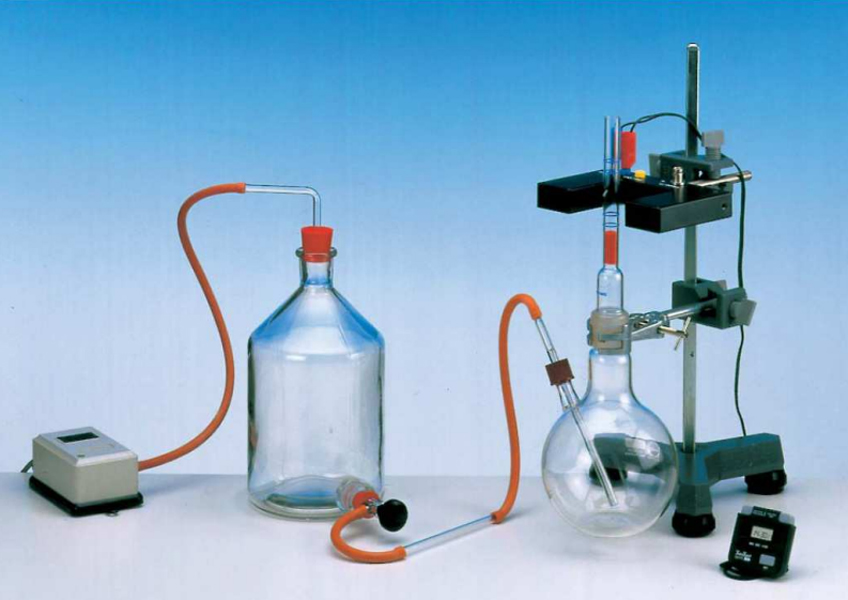Adiabatic coefficient of gases – Flammersfeld oscillator

Principle
A mass oscillates on a volume of gas in a precision glass tube. The oscillations maintained by leading escaping gas back into the system. The adiabatic coefficient of various gases is determined from the periodic time of the oscillation.
Benefits
- Suitable for many different gases
- Compact, easily transportable setup
Light barrier with counter
Reducing valve for CO2 / He
Reducing valve f.nitrogen
Aspirator bottle,clear gl.1000ml
Graduated cylinder 1000 ml
Glass tube,right-angled, 10 pcs.
Glass tubes,straight, 200 mm, 10
Air control valve
Universal clamp
Rubber stopper, d = 22/17 mm, 1 hole
Rubber stopper 26/32, 1 hole 7 mm
Rubber tubing, i.d. 3 mm
Rubber tubing, i.d. 6 mm
Steel cylinder,CO2, 10l, full
Steel cylinder,nitrogen,10l, full
Balance OHAUS LG 311, 4 beams, 0…311 g
Tubing adaptor, ID 3-5/6-10 mm
Aquarium pump, 150 l/h, 230 V AC
Glass tube 200 mm ext. d=8 mm
Precision barometer, d=100mm
Tripod base PHYWE
Support rod, stainless steel, 500 mm
Micrometer screw gauge 0 – 25 mm
Gas oscillator, Flammersfeld
Right angle clamp expert
Power supply 5 V DC/2.4 A with
Tasks
Determine the adiabatic coefficient of air nitrogen and carbon dioxide (and also of argon, if available) from the periodic time of the oscillation T of the mass m on the volume V of gas.
What you can learn about
- Equation of adiabatic change of state
- Polytropic equation
- Rüchardt’s experiment
- Thermal capacity of gases
